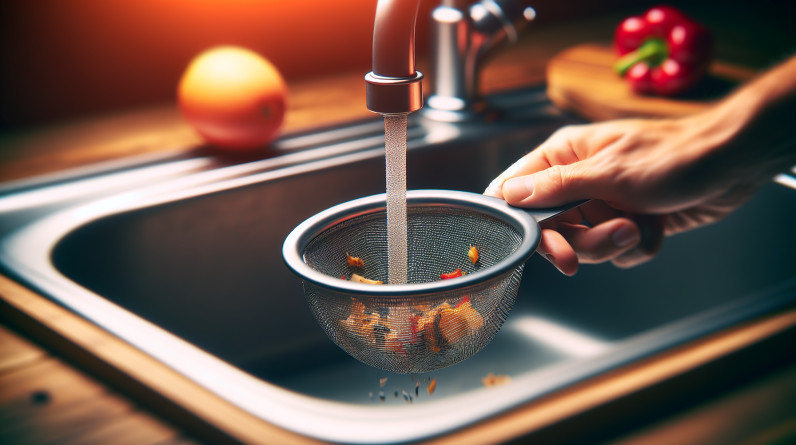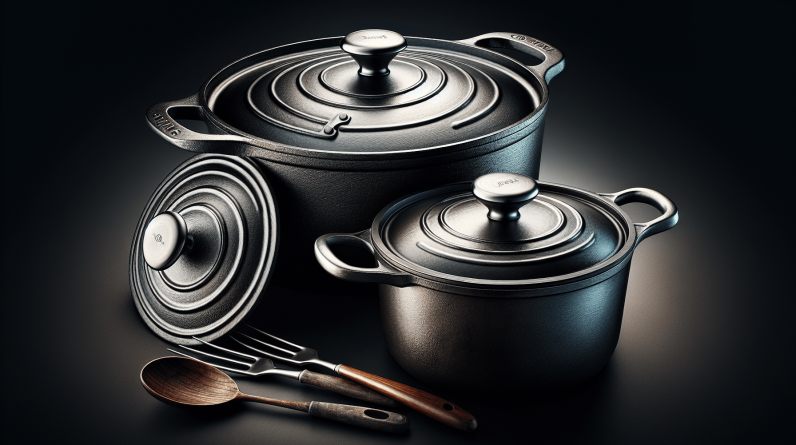Are you tired of wondering whether your cookware is leaching harmful chemicals into your food? Look no further! In this article, we will guide you on how to select the best non-toxic cookware options available. Say goodbye to compromising your health and hello to a seamless and safe cooking experience. Let’s explore the key factors to consider when choosing non-toxic cookware so you can make an informed decision for a healthier kitchen.
Materials to Avoid
When it comes to non-toxic cookware, there are certain materials that should be avoided due to their potential health risks. Teflon is one such material that should be avoided. While it provides a non-stick surface, it contains a chemical called polytetrafluoroethylene (PTFE) which can release toxic fumes when heated at high temperatures. Aluminum, another material to avoid, has been linked to various health issues, including Alzheimer’s disease. Copper is also on the list of materials to avoid, as it can leach into food and cause copper poisoning. Lastly, lead is a highly toxic material that can be found in older cookware, and should be completely avoided.
Safe Cookware Materials
Now that we know what materials to avoid, let’s explore some safe alternatives for non-toxic cookware. Stainless steel is a popular option, as it is durable, non-reactive, and does not leach harmful substances into food. Cast iron is another excellent choice, known for its excellent heat retention and even heat distribution. Ceramic cookware is made from natural clay, making it a safe and non-toxic option. Glass cookware, such as Pyrex, is also a great choice, as it does not contain any toxic chemicals. Lastly, enamel-coated cookware is a safe option, as the enamel acts as a protective barrier between the food and the metal beneath.
Understanding Non-toxic Labels
When shopping for non-toxic cookware, it is important to understand the various labels and certifications that manufacturers may use. BPA-free is a common label found on cookware, indicating that it does not contain the chemical compound bisphenol A, which has been linked to health issues. PFOA-free is another important label to look for, as it indicates that the cookware is free of perfluorooctanoic acid, a chemical used in the manufacturing of non-stick coatings. Lead-free is also a crucial label to consider, as lead is a toxic substance. Lastly, look for cookware that is certified non-toxic, which means it has undergone rigorous testing to ensure its safety.
Researching Brands
When choosing non-toxic cookware, it is helpful to do some research on the different brands available. Reading customer reviews is a great place to start, as it allows you to gather feedback from people who have actually used the cookware. Additionally, checking for third-party certifications, such as those from organizations like the FDA or NSF, can provide additional assurance of the cookware’s safety. It is also wise to consider reputable brands that have been in the market for a while and have a proven track record of producing high-quality, non-toxic cookware. Finally, don’t overlook the option of local and handmade cookware, as these may offer unique and safe alternatives.
Consideration for Different Cookware Types
It’s important to consider the different types of cookware and how they may affect your cooking experience and health. Pots and pans, for example, are commonly used for various cooking techniques, so it is crucial to choose non-toxic options. Bakeware, which is used in baking and roasting, should also be made from safe materials. Utensils, such as spatulas and spoons, can come into contact with food during the cooking process, so it is essential to choose non-toxic options that won’t leach harmful substances into your meals.
Heat Distribution and Retention
An important factor to consider when choosing non-toxic cookware is heat distribution and retention. Even heat distribution is crucial for achieving uniform cooking results. Stainless steel and cast iron are both known for their excellent heat distribution properties, while ceramic and glass may take longer to heat up but provide even heat once they do. When it comes to heat retention, cast iron excels in this area, while stainless steel and ceramic are also great options. It’s important to choose cookware based on your specific cooking needs to ensure the best results.
Cooking Surface and Non-stick Properties
The cooking surface of your cookware is another important consideration. Non-stick coatings are commonly used, but it’s essential to evaluate their safety. Some non-stick coatings, like Teflon, contain harmful chemicals that can be released into the air and food when heated. Opting for natural non-stick surfaces, such as seasoned cast iron or ceramic, can be a safer choice. Proper use and maintenance of non-stick cookware are also crucial to prolong its lifespan and prevent the coatings from deteriorating. Avoid using metal utensils or abrasive materials that can scratch the non-stick surface.
Versatility and Durability
When selecting non-toxic cookware, consider its versatility and durability. Multi-purpose functionality is always a plus, as it allows you to use the cookware for various cooking techniques. Stainless steel and cast iron are both versatile options that can be used for a wide range of cooking methods. Additionally, consider the longevity of the materials used. Cookware that is built to last will save you money in the long run and reduce environmental waste. Look for materials that are resistant to scratches and stains, as these can affect both the cleanliness and longevity of the cookware.
Ease of Cleaning and Maintenance
Cleaning and maintenance are important factors to consider when choosing non-toxic cookware. Dishwasher-safe options can save you time and effort, simplifying the cleaning process. However, keep in mind that some non-stick coatings may require handwashing to preserve their integrity. Traditional cleaning methods, such as using soap and water, are generally safe for most cookware, while abrasive cleaners and scouring pads should be avoided as they can damage the cookware’s surface. Additionally, take into consideration any special care instructions provided by the manufacturer to ensure the longevity of your non-toxic cookware.
Additional Features and Accessories
When selecting non-toxic cookware, consider any additional features and accessories that may enhance your cooking experience. Lids and handles, for example, can make cooking and serving more convenient. Ensure that the handles and lids are made from safe materials that can withstand high temperatures. It’s also worth checking if the cookware is compatible with ovens and induction cooktops, as this expands its versatility. Lastly, consider the stackability and storage convenience of the cookware, as efficient storage can help declutter your kitchen and keep your cookware in good condition.
Choosing the best non-toxic cookware requires a careful evaluation of materials, labels, brands, and specific cooking needs. By avoiding materials like Teflon, aluminum, copper, and lead, and opting for safe materials like stainless steel, cast iron, ceramic, glass, and enamel-coated cookware, you can ensure a healthier cooking experience. Understanding non-toxic labels, researching reputable brands, and considering local and handmade options can further support your decision-making process. Keep in mind factors like heat distribution and retention, cooking surface and non-stick properties, versatility and durability, ease of cleaning and maintenance, and additional features and accessories to find the cookware that best suits your cooking style and preferences. Happy and safe cooking!









